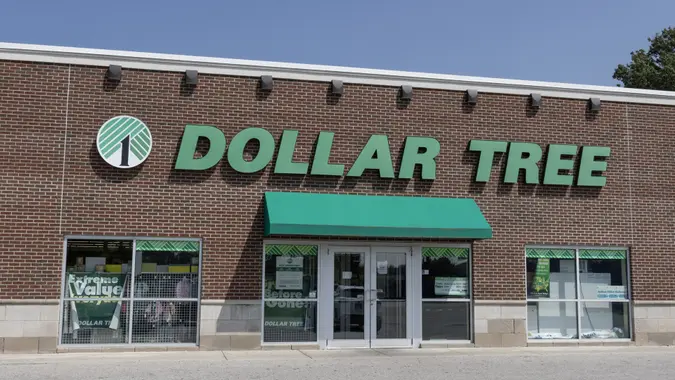How To Find an Extra $400 in Your Budget in 24 Hours, According to Rachel Cruze

Commitment to Our Readers
GOBankingRates' editorial team is committed to bringing you unbiased reviews and information. We use data-driven methodologies to evaluate financial products and services - our reviews and ratings are not influenced by advertisers. You can read more about our editorial guidelines and our products and services review methodology.

20 Years
Helping You Live Richer

Reviewed
by Experts

Trusted by
Millions of Readers
In today’s economy, making your budget work harder might feel like a challenge. However, it’s more manageable than you think. In fact, according to financial expert Rachel Cruze, most people already have extra cash hiding in their monthly spending — they just need to know where to look.
Through Cruze’s 24-hour Money Finder Challenge, countless people have uncovered $400 or more simply by making a few intentional changes. Here’s how to uncover those hidden funds.
Step 1: Create a Budget With Last Month’s Numbers
The foundation of financial success lies in a well-constructed budget. Begin by reviewing spending from the previous month. Bank and credit card statements can help pinpoint where money was allocated. Expenses should be grouped into categories such as groceries, dining out, entertainment and miscellaneous purchases.
Cruze highlighted that overspending is a common issue when no budget is in place. Without a clear plan, impulse purchases can easily derail financial goals. Using last month’s numbers to create a current budget provides a clearer picture of spending habits.
Perfection isn’t necessary — those numbers reflect a budget-free month and will likely require adjustments. A budget sets intentional limits, making it easier to curb overspending and focus on what matters most.
Step 2: Trim the Fat From Your Food Expenses
One of the largest areas of discretionary spending is food. Analyze these categories and identify opportunities to cut back. For instance, packing lunches instead of dining out or skipping the daily coffee shop visit could free up funds immediately. Cruze suggested dividing food expenses into three subcategories:
- Groceries: Review how much was spent last month. Meal planning or shopping sales could help reduce this amount.
- Dining Out: Eating out, whether it’s fast food or fine dining, accumulates costs quickly. Limiting restaurant visits can create significant savings.
- Miscellaneous Food Purchases: This includes coffee runs, gas station snacks or popcorn at events. These smaller expenses often add up more than expected.
Step 3: Audit Shopping and Subscriptions
Shopping and subscriptions are common areas where overspending occurs. By taking a closer look at these categories, it’s possible to identify areas for immediate savings and create more room in the budget. Begin by listing all purchases from the past month and critically evaluating each one. Consider whether the expense was necessary, or if it could have been avoided. Options include:
- Shopping: Discretionary purchases, such as clothing, home goods or gifts, often fall into this category. Impulsive buys, particularly at retailers like Amazon or Target, can add up quickly.
- Subscriptions and Memberships: Recurring expenses like streaming services or fitness memberships are frequent culprits. Assess which ones are truly used and consider cutting back to one or two streaming platforms.
- Miscellaneous Lifestyle Spending: Expenses like event tickets, hobbies or other extras can strain a budget. Temporarily reducing these costs can help free up financial resources.
Step 4: Conduct an Insurance Checkup
Insurance is another area with abundant savings opportunities. Cruze recommended conducting an insurance checkup to ensure coverage is both adequate and cost-effective. Review all policies, including health, auto, renters or homeowners insurance. It’s possible to discover unnecessary coverage or overlooked discounts. Shopping around for better rates or bundling policies with the same provider often results in substantial savings.
Step 5: Take Action and Reallocate
Once areas for cutting back are identified, it’s important to put those savings to work. Whether directed toward paying off debt, building an emergency fund or investing for the future, reallocating found money is essential for achieving financial stability.
By concentrating on food, shopping, subscriptions and insurance, many can uncover hundreds of dollars hidden in their budgets. Rachel Cruze’s 24-hour Money Finder Challenge offers a practical and straightforward approach to taking control of finances and creating the foundation for a better financial future.
 Written by
Written by  Edited by
Edited by 

























